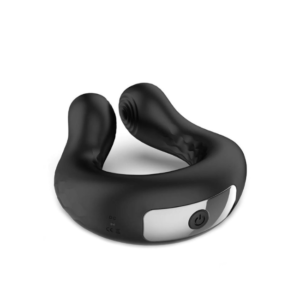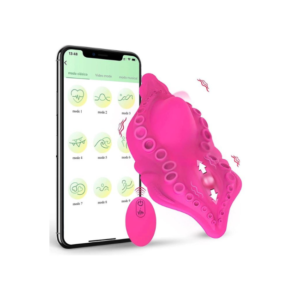Hi, I’m Clarissa with Our Doctor and today I’d like to discuss mismatched sex drives and the four stages of desires. Have you ever found yourself in a situation where your wife or your girlfriend’s sexual drive doesn’t match your sexual energy?
Have you ever felt that your sexual needs are just not coinciding with one another? Let me tell you a story about a couple I know. Let’s call them Jeff and Stacey. Early in their relationship, their weekends were filled with laughter, candlelit dinners, and spontaneous trips.
The passion they shared was palpable, with both equally initiating those intimate moments. However, as the years went by, Stacey noticed that while her desire for intimacy remained consistent, Jeff seemed to wane.
Puzzled and concerned, she couldn’t help but wonder if it was something she had done or if it was an external factor influencing their relationship. This scenario, where a couple’s sexual desires don’t quite align, is termed sexual desire mismatch.
Let’s dive in a bit deeper into understanding this phenomenon. Sexual desire mismatch, also known as desire discrepancy, happens when one partner has a higher or lower sexual drive compared to the other.
One question I get asked a lot is, what do you think the solution is for a mismatched sex drive? This common question is usually asked for men seeking advice because he isn’t having as much sex with his wife or girlfriend as he’d like to.
The most common response here is usually hormone imbalance or simply different priorities, but I also think it’s clear that, especially later in life, women have a substantially lower sex drive than men and that this problem is not due to anything being wrong with the women, it simply just exists.
So what is the solution to a mismatched sex drive? Some think that divorce or breakup is the answer, but is that viable if there are kids in the picture? Other men and women turn to masturbation as a solution, but is this a viable solution as well?
We are all different, some of us are highly sexually active, where we have the desire to orgasm several times a week or day. Others are okay with sex every other week or month, but how do you really know if your partner feels the same way?
Some also think that men had a higher sex drive earlier on in the relationship where women hit their stride later on. Your age and health can also be a factor for sexual desire mismatch. So because there are so many ifs, I recommend you communicate with your partner on what your needs are and attempt to provide a suitable in -home solution.
And if this doesn’t work, consider seeking therapy together or other outside help. Let’s talk a bit about the four stages of desire. These four stages include spontaneous, responsive, physical, and intellectual.
Spontaneous desire is what you often see portrayed in the media, which sometimes includes an immediate urge for sexual activity. People with spontaneous desire don’t require as much intimacy or affection leading up to the sexual activity.
So basically, they are just ready to go at any given time. Bontaneous desire can lead to a multitude of reasons behind this mismatched sex drive, ranging from personal routines and stress to medical or hormonal issues.
Research indicates that this mismatch is not rare. In fact, some studies suggest up to 80% of couples experience it at some point. It’s essential to acknowledge that having perfectly aligned desires throughout a relationship is quite unrealistic, given life’s various challenges.
Those who have responsive desire may need additional time for sexual activity, even after several minutes of foreplay. This means that someone may decide to engage in sexual activity before they get turned on and then their desire emerges as a result of this process.
Many people, including most women, experience desire this way. Responsive desire also means that one may require more affection and sensual touch leading up to sex to help put their mind and body at ease to feel desire.
This group likes long hugs, rubbing on their back or neck, cuddling on the couch or bed, or even showering together. Other triggers may include romantic gestures, verbal affirmations, and validating her emotions.
Now, if this discrepancy is causing discomfort or distress in your relationship, you must address it. Chronic or growing differences can be a source of strain in a relationship. The initial approach should encompass understanding the underlying causes, gauging the real frequency and quality of sexual interactions and improving communication around these topics.
It’s also pivotal to broaden the definition of sex and consider diverse forms of intimacy. Physical desire is simply defined as where a man or woman is attracted to their partner’s physical features and is considered aesthetically pleasing or beautiful.
While sexual attraction focuses on becoming involved sexually, physical attraction focuses on other forms of touch that are not necessarily sexual, such as hugging, kissing, or even massage. This feeling of attraction involves your physical senses, your hormones, and your emotions.
to your nerves and even your immune system. Physical desire can also be sparked in several cues such as the shape of the person’s face, the way they smell, or even the tone or color of their skin. It is important to know that unity in a relationship is fundamental for longevity.
It’s essential to understand that issues of sexual discrepancy aren’t the burden or flaw of just one partner. Instead, there are issues that weave into the very fabric of relationship itself. Effective communication stands at the forefront of resolving such matters.
Engage in deep conversations where both partners share their individual preferences, define clear boundaries, and establish mutual understanding. Exploring new intimate experiences or even focusing on non -sexual bonding moments can often bridge the gap in desires and bring couples closer.
Lastly, intellectual desire or sapial sexuality This is simply defined as wanting to learn something additional about your partner. This desire involves being more attractive by the contents of a person’s mind than by the appearance of their body.
In order to feel this sexual attraction, a safe, sexual person must first feel intellectually stimulated. This type of engagement in conversation is known as picking their brain. With this type of communication, you will find intelligence sexually attractive and even more arousing.
Those who desire less than a relationship often turn to intellectual desire. I want you all to remember that a sturdy foundation in a relationship goes a long way in cushioning the impact of these desire discrepancies.
When couples share a deep emotional bond, minor discrepancies in desire become less of a significant concern as the overall strength of their relationship takes precedent. For those struggling to overcome these hurdles, seek professional guidance can be a game changer.
Emotionally focused therapy, for instance, provides couples with tools and strategies to delve deeper into their emotional world, thereby facilitating a better understanding and resolution of challenges.
In traversing the intricacies of intimate relationships, it’s essential to remember that each individual and couple is unique, just as no two snowflakes are identical, neither are two relationships. What works for one couple might not be the magic solution for another.
However, by cultivating an environment that champions open communication, mutual respect, and continuous learning, couples can navigate the waters of sexual desire discrepancy with greater confidence and understanding.
Lastly, as we continue our journey in understanding the myriad facets of sexual health, let’s not forget the broader picture. Intimacy isn’t solely defined by sexual desire. It encompasses trust, emotional connection, shared experiences, and mutual growth.
Diving into topics like genital numbness and other elements of sexual health shines a light on areas that often remain in the shadows. Prioritizing well -being, both physically and emotionally, isn’t just about addressing challenges, it’s about celebrating the beautiful tapestry of love and connection.
Everyone deserves to experience the very best of what intimacy has to offer. If you wish to hear more about the various types of sexual desires or the frustrations or emotional connections behind them, please make sure to like, follow, and subscribe.








